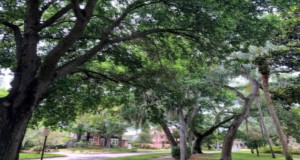Abstract
This new 13-page article combines canopy coverage data from all of Florida's metropolitan and micropolitan areas with ecological models developed by the USDA Forest Service to calculate several key benefits of urban trees and an approximation of their monetary value. Benefits of urban trees include carbon sequestration/storage, air pollution filtration, and stormwater mitigation. Written by Drew C. McLean, Andrew K. Koeser, Deborah R. Hilbert, Shawn Landry, Amr Abd-Elrahman, Katie Britt, Mary Lusk, Michael G. Andreu, and Robert J. Northrop, and published by the UF/IFAS Environmental Horticulture Department.
https://edis.ifas.ufl.edu/ep595
Unless otherwise specified, articles published in the EDIS journal after January 1, 2024 are licensed under a Creative Commons Attribution-NonCommercial-NoDerivs 4.0 International (CC BY-NC-ND 4.0) license.

